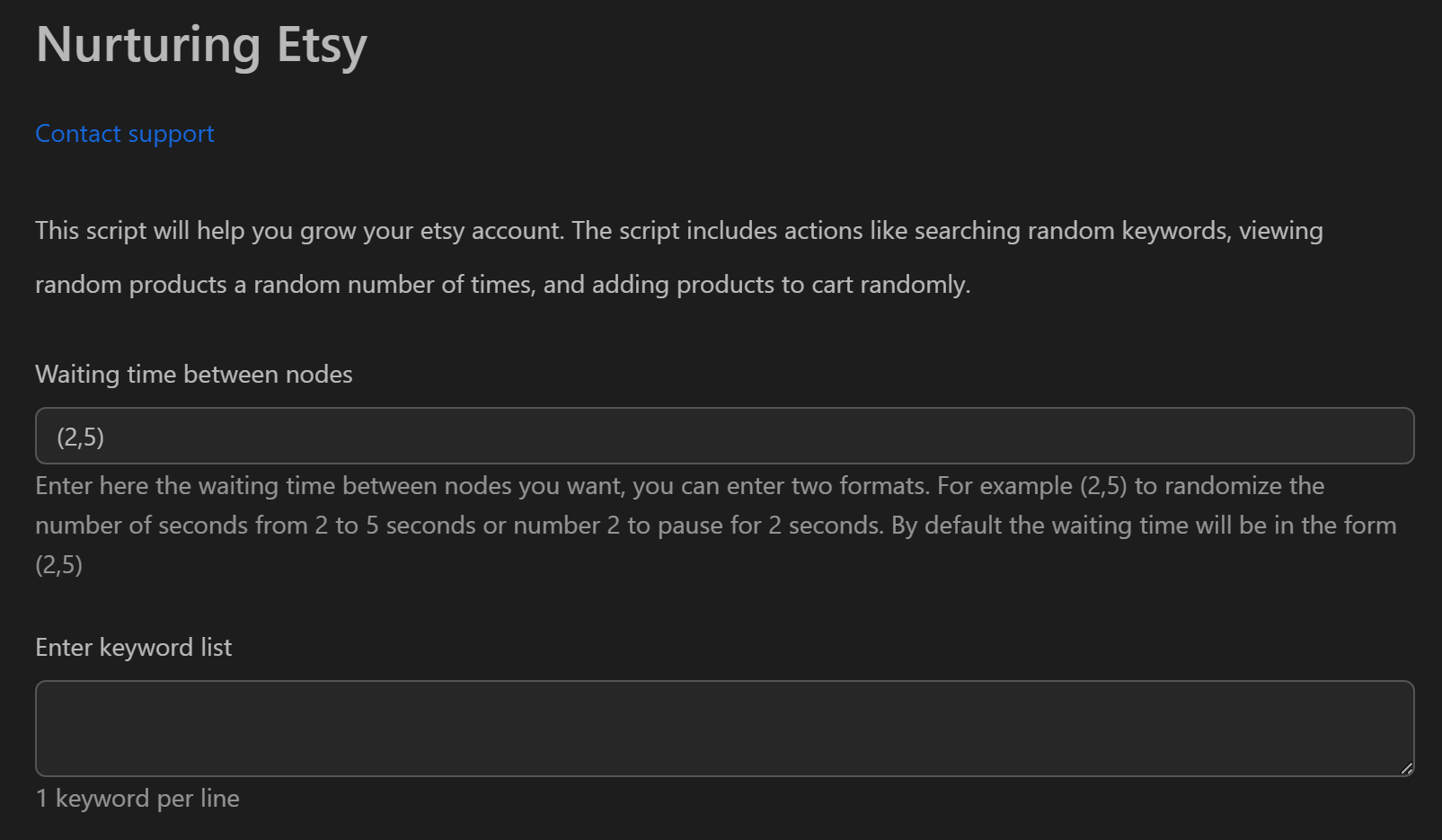Etsy Account Nurturing Tool: A Safe Automation Solution for POD and Dropshipping Sellers
In the vast e-commerce universe, Etsy stands out as a unique galaxy, a convergence of creativity, originality, and the spirit of handcrafted entrepreneurship. It is not just a marketplace, but a global community connecting millions of creators—from artisans making handmade goods and POD (Print on Demand) designers to those dropshipping unique products—with customers seeking something different. However, behind this colorful canvas of creativity lies a challenging operational reality: Etsy's algorithm, designed to protect the integrity of the community, is becoming increasingly sophisticated and strict.
For a seller on Etsy, especially in the POD and dropshipping sectors, the biggest concern comes not just from competition or marketing, but from the risk of sudden account suspension. An account that has been inactive for a long period, or a new account that suddenly uploads a large number of products, can be flagged by the system as suspicious behavior. Nurturing an account—that is, maintaining a natural and consistent activity history—has become an essential requirement. Yet, this task is time-consuming and repetitive, taking away precious resources that should be dedicated to creation and business development.
To solve this difficult problem, the Etsy Account Nurturing Tool was created. This is not a spam bot, but a smart and silent virtual assistant, programmed to automate daily tasks by accurately simulating the behavior of a real user. This tool is a strategic solution that helps sellers protect their most valuable digital asset, ensure the health of their shop, and create a solid foundation for sustainable business growth on Etsy.

Decoding the Technology: The Art of Simulating Human Spontaneity
To address the issues above, this tool doesn't just automate actions mechanically; it simulates them with surprising sophistication and randomness to create a credible activity history. The deep customization options provided are the secret to humanizing the machine's behavior.
The Foundation: Building a Logical Web Browsing Journey
The tool performs a sequence of actions in a natural order, exactly like how a potential customer discovers products on Etsy: Search -> View Product -> Favorite -> Add to Cart. This chain of actions creates a meaningful activity story, rather than just a series of soulless clicks.
The First Layer of Humanization - Random Wait Times
This is an extremely important detail demonstrated through the Wait time between nodes feature. Users can set a time range, for example, from 2 to 5 seconds. The tool will automatically choose a random number within this range to pause between each action (e.g., after searching, wait 3.7 seconds before clicking on a product). A real user never acts instantly; they need time to read, think, and compare. This random waiting period completely breaks the robotic rhythm of simple bots, creating a natural, human-like operational tempo.
The Second Layer of Humanization - Diverse and Non-Repetitive Scenarios
Boredom and repetition are the clearest signs of a bot. This tool solves that problem by allowing deep customization of each scenario's input:
- Diverse Keyword List: Users can input dozens or hundreds of different keywords, each on a new line.
- Random Number of Searches: Instead of always searching for a fixed number of keywords, you can set the
Number of keywords to searchwithin a range, for example, from 1 to 2. In each run, the tool will randomly select 1 or 2 keywords from your provided list to perform the search. - Random Number of Product Views: Similarly, you can configure the
Number of products to view for each keywordwithin a range. This perfectly simulates the varying levels of customer interest. Sometimes they look at many products; other times they just browse a few.
This combination ensures that no two activity sessions are identical. Each time it runs, the tool creates a unique scenario, a completely new product discovery story.
The Final Layer of Human--ization - Probability-Based Actions
This is perhaps the most sophisticated feature, demonstrated by the Add to cart rate. Instead of always adding a product to the cart after viewing it, you can set a percentage, for example, 10%. This means that, on average, for every 10 products viewed, only 1 will be added to the cart. Human behavior is not a rigid sequence of commands; it is based on probability and whim. This feature perfectly simulates a user who is window shopping rather than one with a clear intent to buy, creating an extremely credible and low-alarm activity profile.
Strategic Applications: From Account Maintenance to Business Expansion
This tool not only helps an account survive but is also a strategic instrument for business growth.
For New POD/Dropshipping Stores: Building Initial Trust
Many platforms apply a sandbox mechanism to new accounts, where their activities are more closely monitored. By using the tool to create a gentle, natural activity history in the first few weeks—with long wait times and a low add-to-cart rate—you are warming up your account. This helps build a foundation of trust before you start aggressive marketing campaigns or upload hundreds of products, significantly reducing the risk of being suspended right from the start.
For Experienced Sellers
Even long-established stores can be at risk if they have long periods of inactivity while the owner is busy with designing, sourcing suppliers, or other tasks. This tool acts as a diligent assistant, ensuring your shop always has a steady heartbeat of activity, maintaining positive signals with Etsy's algorithm and keeping your store's visibility at an optimal level.
For Operators of Multiple Stores
For ambitious entrepreneurs operating multiple stores in different niches, managing them securely is paramount. When used in conjunction with technologies like separate browser profiles and proxies, this tool allows you to nurture each store in an independent environment, preventing Etsy from linking them together. This creates a strong layer of protection, ensuring that if one store runs into problems, the rest of the stores in your portfolio remain safe.
